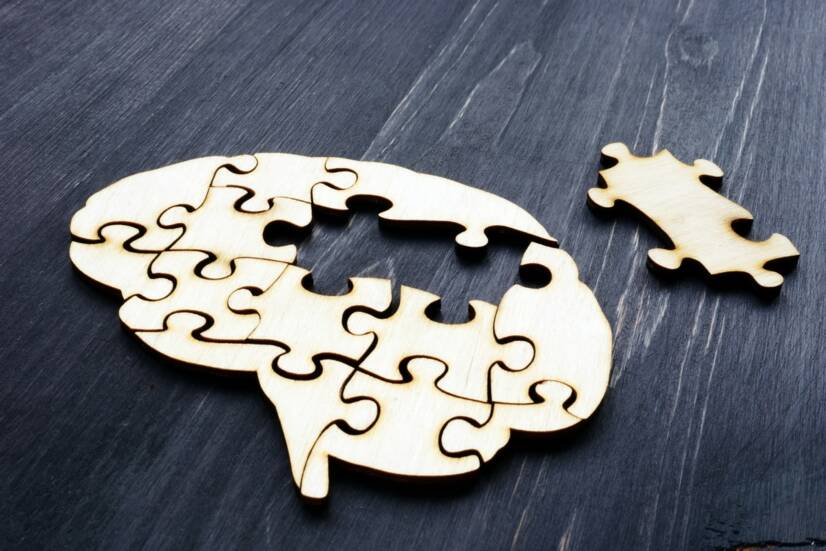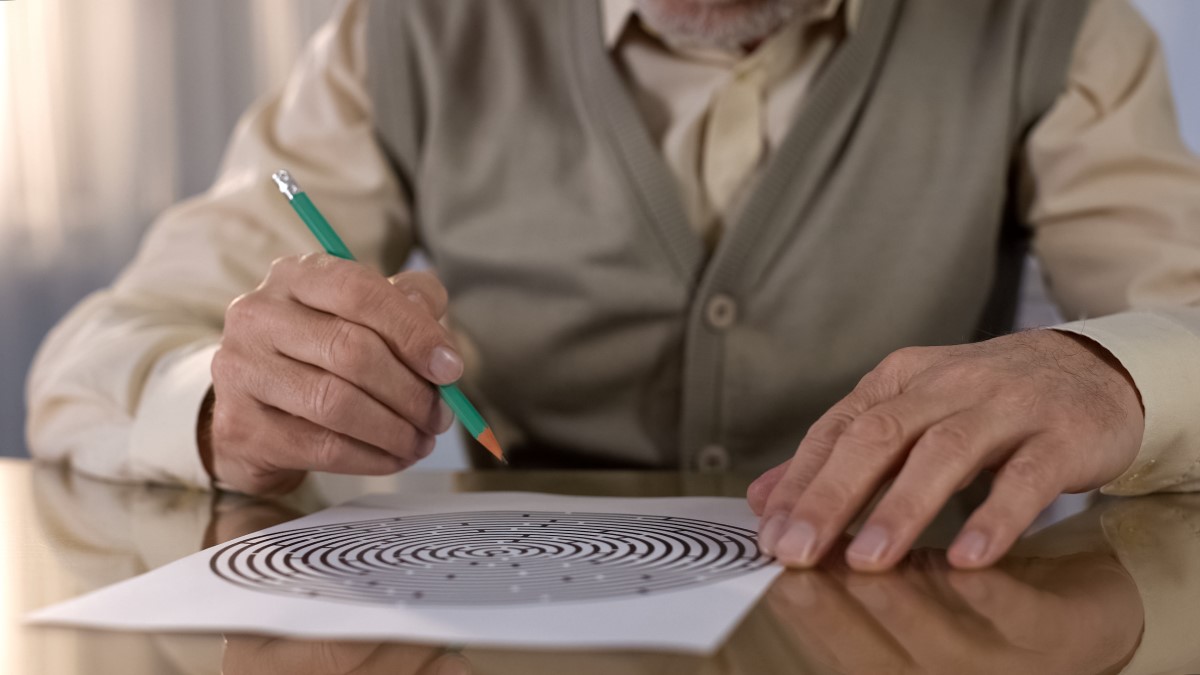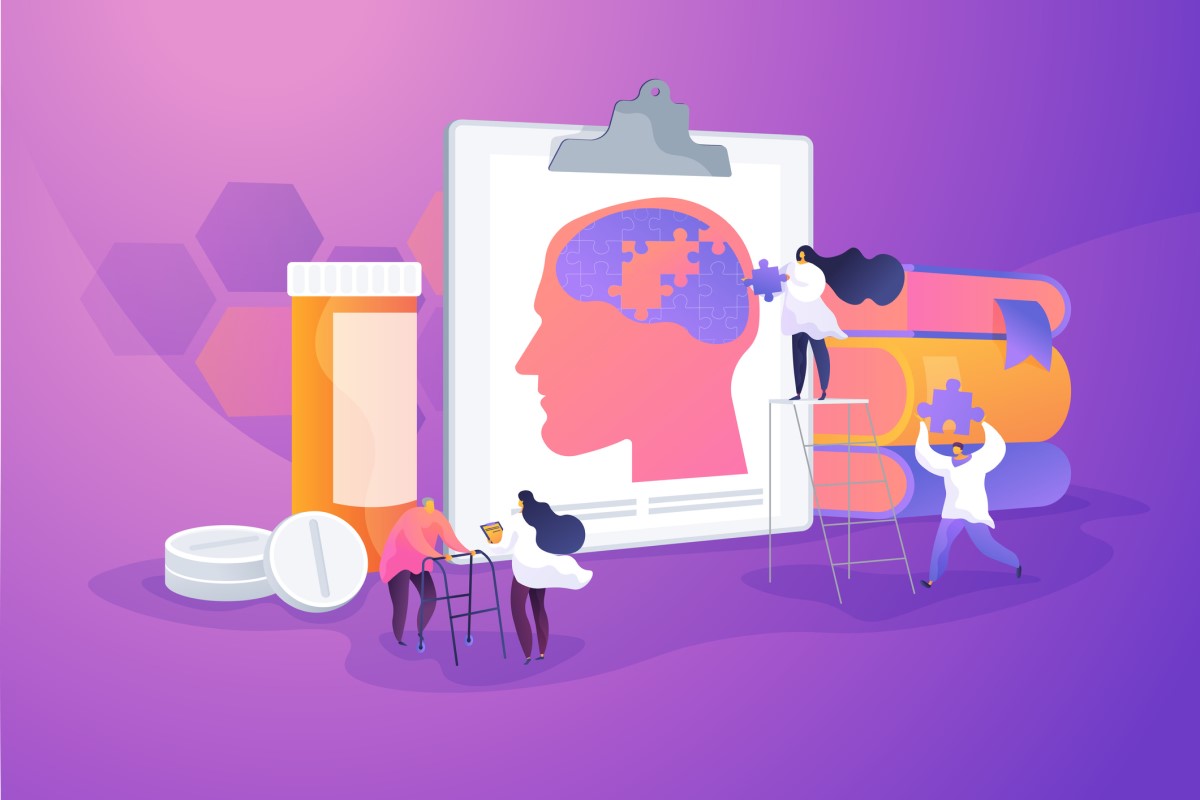- solen.sk - ALZHEIMER'S DISEASE - DIAGNOSIS AND TREATMENT, Pavel Ressner, MD, Centre for Diagnosis and Treatment of Extrapyramidal Diseases and Cognitive Disorders, Department of Neurology, Ostrava-Poruba University Hospital
- solen.sk - ALZHEIMER'S TYPE DEMENT, Daniel Bartko, Igor Čombor, Štefan Madarász, Institute of Medical Sciences, Neurosciences and Military Health, Central Military Hospital SNP, Ružomberok, Milan Luliak, sanofi aventis Pharma Slovakia, s.r.o., Bratislava
- solen.sk - Alzheimer's disease and mixed dementia - one entity or two?, MUDr. Stanislav Šutovský, PhD., prof. MUDr. Peter Turčáni, PhD., I. neurological clinic of the Faculty of Medicine of Charles University and University in Bratislava, MUDr. Mária Králová, PhD., MUDr. Ľubomíra Izáková, PhD., Psychiatric clinic of the Faculty of Medicine of Charles University and University in Bratislava
- nzip.cz - information from the Ministry of Health of the Czech Republic on Alzheimer's dementia
Alzheimer's disease: what is it, why does it arise and what are its symptoms?

Alzheimer's disease is clearly one of the most common degenerative brain diseases. The most well-known feature of dementia is the gradual loss of memory.
Most common symptoms
- Malaise
- Speech disorders
- Apathy
- Hallucinations and delusions
- Dementia
- Memory disorders
- Disorders of consciousness
- Mood disorders
- Tremor
- Anxiety
- Confusion
Characteristics
Alzheimer's disease is one of the most common degenerative diseases of the brain.
What is Alzheimer's and what is dementia?
Is there a difference between them?
How does Alzheimer's come about and why?
How does it manifest itself, what are its stages?
Answers to these FAQs and other interesting information are offered in this article.
Dementia is a disease that affects an estimated 25 million people worldwide, including 5 million in Europe. This number is growing every year.
It is a disease that involves a set of symptoms caused by multiple disorders at different levels of the brain.
The most well-known feature of dementia is the gradual loss of memory. However, it is important to be clear that not every memory disorder is dementia. In addition, 'Alzheimer's' has other, serious symptoms that incapacitate both the patient and his or her immediate family.
The term dementia is a label for several types of degenerative diseases:
- Alzheimer's dementia (AD)
- multi-infarct dementia, also called vascular dementia
- subcortical atherosclerotic encephalopathy (Binswanger's disease)
- Lewy Body dementia
- frontotemporal dementia
- mixed type of dementia
- dementia resulting from another chronic disease, such as metabolic disease
Alzheimer's disease is clearly one of the most common degenerative diseases of the brain.
Around 4% of people over 65 have some form of degenerative brain disease.
Up to 60% have Alzheimer's disease.
The basis of Alzheimer's disease is the death of nerve cells in the brain, with the formation of plaques and neurofibrillary tangles. These changes produce the characteristic clinical picture of dementia.

The diagnosis of dementia must meet certain criteria
The patient's memory, thinking function, orientation, emotional level and physical ability are assessed.
Memory
Memory lapses are most striking when remembering new information.
In a more advanced state, it is also challenging to retrieve older memories. Information from the patient must always be objectified and confronted with information from a close person, most often the family.
There are also specific neuropsychological tests that objectify memory impairment.
Thinking
Another sign is the loss of cognitive function. Thus, the patient loses judgement, has slowed thinking, becomes clumsy in planning, organising and processing ordinary information.
Cognitive disorders include the following:
- aphasia - loss of comprehension and the ability to explain ideas through words
- apraxia - the inability to perform physical actions, complex movements when challenged, although motor skills are not impaired
- agnosia - the patient is unable to identify common objects, although sight and touch and other sensory organs are not impaired
- non-performance in planning, sequencing of steps, organising routine activities
Consciousness
The quality of consciousness tends to be very good for a long time, i.e. obscured consciousness is absent.
Emotions
AD patients are characterized by a gradual loss of emotional control and motivation.
Emotional lability, irritability, apathy and disinterest or rudeness are present.
Memory loss does not indicate the presence of dementia
We do not consider dementia to be:
- Age-related cognitive decline - age-related slowing of thinking with mild memory impairment and reduction in brain volume.
- Mild cognitive impairment - memory loss and impairment in thinking are not significant enough to qualify as dementia, but are also worse than in normal aging.
Causes
Alzheimer's disease is still the subject of studies and research, and therefore the explanation of its causes is constantly changing.
Today, there are several theories of its origin, some clinically proven, others only under investigation.
Reduction in brain volume
Reduction in brain volume or atrophy is the most striking feature of AD on brain imaging. The reduction is particularly present in the temporal lobe.
The brain is smaller but also lighter.
It is between 900 and 1150 grams.
A healthy brain is up to 1350 grams.
This shrinkage is due to loss of nerve cells in the cerebral cortex and demyelination (loss of myelin, the covering of nerves) in the subcortical regions of the brain.
Senile plaques and neurofibrillary disorganisation
Primary dementias are proteinopathies. In this case, a certain pathological type of protein is found in the brain. This protein is neurotoxic and damages nerve cells by inducing non-infectious inflammation in its surroundings.
In AD there is an accumulation of the pathological protein beta-amyloid, which forms the characteristic senile plaques. These plaques arise extracellularly, i.e. outside the nerve cell.
The second protein is the Tau protein, which is deposited in neurofibrillary tangles. These form inside the nerve cell, or intracellularly.
The result is direct damage to nerve cells and their gradual loss.
Low choline acetyltransferase activity
Choline acetyltransferase is an enzyme that synthesizes acetylcholine from choline.
Acetylcholine is an important substance in the nervous system by which information is spread between nerve cells.
It is called a neurotransmitter.
Its depletion in the cerebral cortex and hippocampus is associated with the development of cognitive impairment in AD, particularly speech-related disorders.
It does not cause structural changes in the brain.
Immunological diseases
The presence of frequent inflammation, especially in middle age, increases the risk of developing AD in older age.
This hypothesis has arisen recently and the link has not yet been directly proven.
Genetics
Alzheimer's disease also has a genetically transmitted form. It is a familial dementia that is an autosomal dominant disease.
This means that the disease is inherited from parent to child and both sexes can be affected. If one parent has this dementia, the likelihood of a child being born with the mutation present is between 50-75%.
It is caused by mutations in three genes:
- the amyloid precursor protein gene, located on chromosome 21.
- the gene for presenilin-1, located on chromosome 14
- the gene for presenilin-2, located on chromosome 1
Risk factors
The sporadic form of AD is caused by a combination of certain genetic predispositions and environmental factors that we refer to as risk factors for AD.
Some of these we cannot control, others we can.
Uncontrollable risk factors:
- Age
- Carrying specific genetic information for 'alipoprotein E'. This is a gene that only causes susceptibility to AD, it is not a direct cause of it
Influencable risk factors:
- high cholesterol with elevated LDL
- elevated glycerol
- obesity
- high blood pressure
- heart and blood vessel disease
- diabetes
- smoking
- alcoholism
- lower education
- insufficient physical and mental activity

Symptoms
The basic symptoms of dementia are twofold.
In the first place, there are cognitive impairments, but in addition to these, there are also non-cognitive deficits (so-called neuropsychiatric), physical symptoms and symptoms of functional impairment.
Cognitive symptoms:
- gradual loss of memory
- impaired thinking
- judgement
- poor orientation in space, time, disorientation by person
- speech impairment
- inability to learn new things
- cognitive impairment
- inability to perform complex motor tasks
- inability to name familiar objects
Neuropsychiatric symptoms:
- Depression
- restlessness
- apathy and disinterest
- mania
- delusions
- hallucinations
- exuberance
- aggression
- insomnia or sleep rhythm disorder
- rudeness in social behaviour
- unseemly motor manifestations
Physical symptoms:
- urine leakage, bedwetting
- weight loss, food refusal
- loss of muscle mass
- extrapyramidal symptoms, i.e. tremor, rigidity, gait disturbances, etc.
Patient functionality:
- difficulty with complex tasks, e.g. driving, work habits
- inability to do household chores
- problems with personal hygiene, which requires a sequence of steps
- limitations in daily routine activities such as eating, dressing, combing...
- impaired communication, expressing one's needs and thoughts
- independent movement is almost completely impossible

Diagnostics
The diagnosis of Alzheimer's dementia is made in three steps.
1. Initial clinical examination
The first-contact physician plays an important role and may notice the initial signs. He or she may also be consulted by a family member accompanying the patient.
The examination focuses on cognitive symptoms, neuropsychiatric symptoms and their interference with the patient's daily life.
It is carried out by a specialist, either a neurologist or a psychiatrist.
The nature of the onset of these symptoms is also taken into account, whether it was sudden or whether the change occurred gradually and gradually.
The medical history should also include information about the triggering or exacerbating factors and the course of the suspected events.
Cognitive screening tests are then administered. The most commonly used are the MiniMental State Examination (MMSE), Montreal Cognitive Assessment (MoCA), Clock Drawing Test (CDT), verbal fluency tests, and possibly others.
2. The second step is testing to rule out secondary dementias
These are dementias caused by the patient's other chronic illness. These secondary dementias are potentially reversible, i.e., curable, with appropriate treatment.
It starts with a simple laboratory test that can detect a number of diseases, not just metabolic diseases.
This includes blood count, differential blood count, blood biochemistry (minerals, glycaemia, renal parameters, liver function tests, albumin, inflammatory markers, etc.), sediment and urine biochemistry, hormone profile, especially thyroid hormones (TSH and fT4), vitamin B12 and folic acid levels, and last but not least serological tests for the presence of syphilis infection.
An ECG and chest X-ray are performed to assess the state of the cardiovascular system, i.e. the heart and blood vessels.
An expanded panel of tests includes testing for other B vitamins and vitamin D levels, toxicology testing, levels of certain neurotoxic drugs, tests for the presence of HIV and Borrelia infection, or determination of heavy metal levels, among others.
3. The third step is to diagnose Alzheimer's disease itself and differentiate it from other primary dementias
The specialist looks for characteristic symptoms according to specialized criteria. He or she invites family and other close people to the examination.
A structural MRI of the brain demonstrates brain atrophy in the characteristic locations of AD, namely the temporal and parietal lobes of the cerebral cortex. It also allows us to assess the state of the blood vessels and their changes, which may also be involved in the development of dementia.
CT scanning of the brain is used to exclude other processes in the brain, such as hemorrhage, tumor, hydrocephalus, etc.
Genetic testing is especially needed when there is a history of rapid disease progression and when the disease occurs in a younger patient. The presence of a genetic mutation in the amyloid precursor protein gene, the presenilin-1 gene or the presenilin-2 gene is detected.
Differential diagnosis
It is important to distinguish other memory disorders from dementia.
For example, in mild cognitive impairment, the cognitive component of the disorder is evaluated to determine whether there is a significant impairment in the patient's quality of life and interference with activities of daily living.
It is also necessary to exclude other diagnoses with a similar clinical picture:
- Delirium
- Depression
- Other primary degenerative dementia
- Vascular dementia
- Secondary dementia

Course
From the beginning, the disease is characterised by a clinical picture with memory loss, speech and intellectual impairment. It develops in several stages and is accompanied by other symptoms.
1.
In the initial stage, there is frequent headache, dizziness, a slight decrease in intellect, slowing of thinking, easier memory impairment.
The patient first has difficulty with more complex operations, e.g., counting, and economic errors in handling money are common.
Echolalia is not infrequently the first symptom. It is the repetition of words and sounds heard.
At this stage, motor manifestations are not yet present, but depression and restlessness are already expressed.
2.
In the second stage, memory impairment progresses and cognitive disturbances are added.
The patient cannot remember where he was, what he did, what he had for lunch. He forgets objects, loses them or puts them away in unusual places.
The patient may also forget familiar names, such as favourite actors, but also acquaintances or even family members.
Orientation in space and time is also impaired. Patients often get lost in a familiar city, on a familiar street, do not know which bus they are travelling on or where they are going. Such episodes can be very upsetting and they are often confused, which promotes deepening anxiety and depression.
At this stage, even family members, acquaintances or colleagues at work notice the change. The patient is still aware of the situation.
This phase lasts 1-3 years.
This is the period after which Alzheimer's disease is most often diagnosed.
3.
In the next stage, the disorders progress more rapidly.
Patients hardly fixate on new information at all. If they do, it is only for a very short time.
Long-term memory is also impaired. They cannot remember their date of birth, address, where they live, they do not recognise familiar places, people, family, partner, children, they talk out of turn, and often mentally stray to illogical things.
Emotional instability, behavioural and thinking disorders are also fully developed. In particular, poor sleep, disturbed sleep rhythms, frequent waking up at night, pacing around the room, even leaving the room or the home, place a great psychological burden on the family or the carer.
At this stage of the disease, patients are already fully dependent on care.
4.
In the last stage, there is a complete loss of memory and the ability to care for oneself.
Patients fail to perform basic hygiene, forget to eat or drink, urinate, leak stools, hallucinations, delusional thoughts, paranoia, emotional instability and aggression.
The terminal stage includes complete immobility, immobility, incontinence. They are accompanied by verbal and auditory screams, aggressive attacks, and undignified behaviour and treatment, often with their body and waste products.
Patients die most often from infectious diseases that are difficult to manage in their condition.
Prevention
Alzheimer's disease is a disease with several causes that are still not fully understood.
What we do know, however, is that an innate predisposition associated with risk factors plays a significant role. Therefore, one of the options for prevention is to influence these risk factors.
Factors that have a protective effect on nerve cells and the brain are:
- higher educational attainment
- an active lifestyle
- job satisfaction and job placement
- rich social interactions
- involvement in social events
- activities that stimulate mental and physical abilities
All of these activities can improve the intellect and help to keep up the pace of thinking.

Regular physical exercise is a preventive measure against the early onset of dementia in older people, especially in people with an inherited predisposition.
Lifestyle is also important in maintaining overall health with the aim of avoiding the development of population diseases. These include high cholesterol, high blood pressure, obesity, diabetes, excessive alcohol consumption and smoking.
How it is treated: Alzheimer's disease
Treatment and medication for Alzheimer's disease. What regimen will help?
Show moreHow the brain works during Alzheimer's disease (video)
Alzheimer's disease is treated by
Other names
Interesting resources










